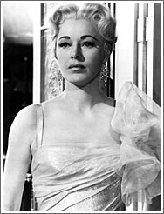Good 48º clear morning.
Yesterday we topped at 92º.
Picture of the day..... crazy clouds
Interesting about the history of mustard...
The whole, ground, cracked, or bruised mustard seeds are mixed with water, vinegar, lemon juice, wine, or other liquids, salt, and often other flavorings and spices, to create a paste or sauce ranging in color from bright yellow to dark brown. The taste of mustard ranges from sweet to spicy.
Commonly paired with meats and cheeses, mustard is also added to sandwiches, hamburgers, corn dogs, and hot dogs. It is also used as an ingredient in many dressings, glazes, sauces, soups, and marinades. As a cream or as individual seeds, mustard is used as a condiment in the cuisine of India and Bangladesh, the Mediterranean, northern and southeastern Europe, Asia, the Americas, and Africa, making it one of the most popular and widely used spices and condiments in the world.
The Romans were probably the first to experiment with the preparation of mustard as a condiment. They mixed unfermented grape juice with ground mustard seeds to make "burning must", mustum ardens — hence "must ard". A recipe for mustard appears in De re coquinaria, the anonymously compiled Roman cookbook from the late fourth or early fifth century; the recipe calls for a mixture of ground mustard, pepper, caraway, lovage (a large edible white-flowered plant of the parsley family), grilled coriander seeds, dill, celery, thyme, oregano, onion, honey, vinegar, fish sauce, and oil, and was intended as a glaze for spit-roasted boar.
The Romans likely exported mustard seed to Gaul, and by the 10th century, monks of Saint-Germain-des-Prés in Paris absorbed the mustard-making knowledge of Romans and began their own production. The first appearance of mustard makers on the royal registers in Paris dates back to 1292. Dijon, France, became a recognized center for mustard making by the 13th century. The popularity of mustard in Dijon is evidenced by written accounts of guests consuming 320 litres (70 imp gal which equals 280 quarts!) of mustard creme in a single sitting at a gala held by the Duke of Burgundy in 1336. In 1777, one of the most famous Dijon mustard makers, Grey-Poupon, was established as a partnership between Maurice Grey, a mustard maker with a unique recipe containing white wine; and Auguste Poupon, his financial backer. Their success was aided by the introduction of the first automatic mustard-making machine. In 1937, Dijon mustard was granted an Appellation d'origine contrôlée ("protected designation of origin"). Due to its long tradition of mustard making, Dijon is regarded as the mustard capital of the world.

The early use of mustard as a condiment in England is attested from the year 1390 in the book The Forme of Cury which was written by King Richard II's master cooks. It was prepared in the form of mustard balls—coarse-ground mustard seed combined with flour and cinnamon, moistened, rolled into balls, and dried—which were easily stored and combined with vinegar or wine to make mustard paste as needed. The town of Tewkesbury was well known for its high-quality mustard balls, originally made with ground mustard mixed with horseradish and dried for storage, which were then exported to London and other parts of the country, and are even mentioned in William Shakespeare's play King Henry the Fourth, Part II.
Chicken Fried Rice
- Cook and shred the chicken.
- Preheat a large skillet or wok to medium heat. Pour sesame oil in the bottom. Add white onion and peas and carrots and fry until tender.
- Slide the onion, peas and carrots to the side, and pour the beaten eggs onto the other side. Using a spatula, scramble the eggs. Once cooked, mix the eggs with the vegetable mix.
- Add the rice and chicken to the veggie and egg mixture. Pour the soy sauce on top. Stir and fry the rice and veggie mixture until heated through and combined. Add chopped green onions if desired.
Historically this date.........
And births this date include.....
USMC!!!! Most decorated Marine ever!
All I know. Nuff said. Have a good Monday. Ciao.
xo Sue Mom Bobo
For the sheer love of all things hair, style and wisdom, June 26th is National Beautician’s Day. Also known as stylists and cosmetologists, these men and women make us look our best every day.
Cosmetology is the study and application of a beauty treatment. The branches of cosmetology include hair styling, skin care, cosmetics, manicures, pedicures, and electrology. This means they buff, polish, trim, pluck, perk, brighten, lighten, plump, and mostly make our finest features shine. They continually train in all the ways to keep us looking our best while keeping up with the latest styles, the most reliable products, treatments, and techniques.
Many also become close confidants. Over many years of caring for our hair and skin, they come to know our families and watch them grow, experiencing our ups and downs with us. As a result, we tend to develop a strong bond with our beautician. For all these reasons, they deserve to be appreciated on National Beautician’s Day.
HOW TO OBSERVE
Whether your beautician is new or the relationship has grown over the years, be sure to share your appreciation with a token of gratitude. Consider giving your beautician flowers, a card, or a cup of coffee. One of the best ways to show your appreciation is by giving them your recommendation on their social media channels. Glowing praise goes a long way toward building their clientele.











